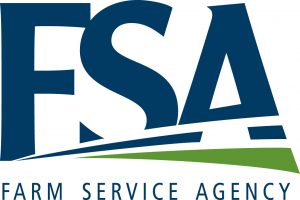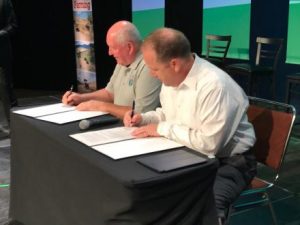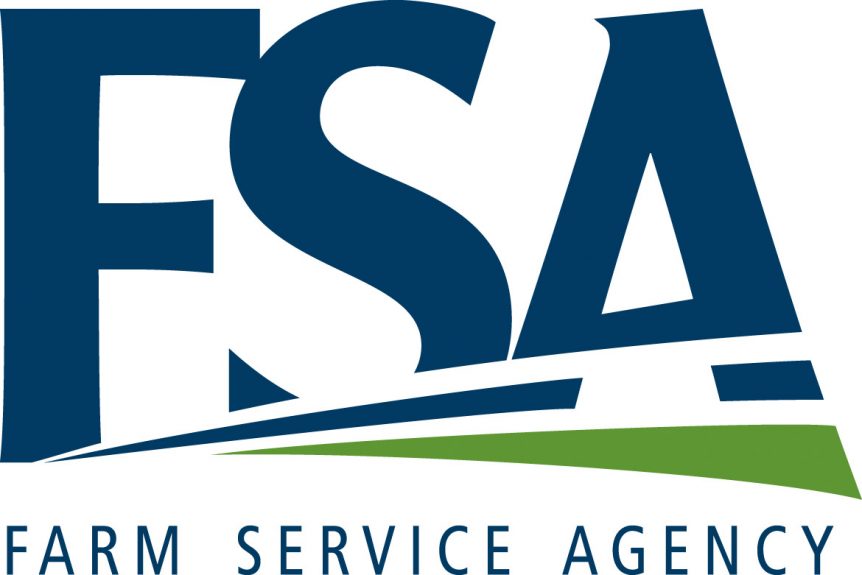 Through the work of dedicated staff in over 2,100 county and state offices, the U.S. Department of Agriculture (USDA) Farm Service Agency (FSA) provides vital farm safety-net assistance to agricultural producers across America.
Through the work of dedicated staff in over 2,100 county and state offices, the U.S. Department of Agriculture (USDA) Farm Service Agency (FSA) provides vital farm safety-net assistance to agricultural producers across America.
“We’ve seen recent challenges in farm income and commodity prices,” said Dr. Robert Johansson, Acting Deputy Under Secretary for the Farm Production and Conservation mission area. “The ‘safety net’ provided in the 2014 Farm Bill has helped producers withstand economic losses as well as losses resulting from natural disasters. Loans for operating expenses, farm purchases and other purposes help current producers stay in business and allow a new generation of farmers and ranchers get their start.”
Agriculture demands working capital. According to Johansson, FSA provided credit, either directly or guaranteed through commercial lenders, to 120,000 family farmers across the country.
In fiscal year 2017, USDA Farm Loan Programs pumped $6 billion in support to a diverse group of producers across America. That was the second highest total in FSA history. Over $2.5 billion of that total was direct and guaranteed operating loans, and another $3.5 billion was allocated for direct and guaranteed farm ownership loans. This additional financing enabled farmers and ranchers across the country to access capital to start their operations, or to expand their existing operations. The new lending continued the recent growth in FSA’s farm loan portfolio.
FSA highlights from the year include:
Agriculture Risk Coverage and Price Loss Coverage (ARC/PLC) and Conservation Reserve Program (CRP)
- USDA is issuing approximately $8 billion in payments under the ARC and PLC programs to agricultural producers who suffered market downturns in 2016.
- In 2017, FSA distributed $1.6 billion in CRP payments to over 375,000 Americans for doing their part in improving water quality, reducing soil erosion and increasing wildlife habitat.
Disaster Assistance
In response to Hurricanes Harvey, Irma and Maria, USDA announced special procedures to assist producers in states and territories who lost crops or livestock or had other damage to their farms or ranches. Also, because of the severe and widespread damage caused by the hurricanes, USDA provided flexibility to assist farm loan borrowers. FSA dispatched additional staff to the affected areas and, in response to a request for assistance, rolled out a special program providing  vouchers to dairy herd owners in Puerto Rico who used the assistance to purchase feed.
vouchers to dairy herd owners in Puerto Rico who used the assistance to purchase feed.
USDA also provided extensive assistance for a variety of other disasters throughout the country, including drought in the northern high plains, wildfires in the west and central plains, floods, tornados, freezes and other storms. For example, in July, USDA authorized the use of additional CRP lands for emergency grazing and haying in and around portions of Montana, North Dakota and South Dakota affected by severe drought. USDA also added the ability for farmers and ranchers in those areas to hay and graze CRP wetland and buffer practices. This followed a previous action in April and June to assist the area and provided livestock producers with an additional feed source. In October, FSA teamed with other USDA agencies to provide assistance to wildfire-damaged areas of northern California, including loans and other disaster assistance programs.
New Farmers

U.S. Agriculture Secretary Perdue and Steve Records, the Vice-President of Field Operations for SCORE signing the SCORE Agreement.
In August, Agriculture Secretary Sonny Perdue signed a Memorandum of Understanding with officials from SCORE, the nation’s largest volunteer network of expert business mentors, to support new and beginning farmers. The agreement provides new help and resources for beginning ranchers, veterans, women, socially disadvantaged Americans and others, providing new tools to help them both grow and thrive in agribusiness.
Johansson said these accomplishments are in line with Secretary Perdue’s goals of maximizing the ability of the men and women of America’s agriculture and agribusiness sector to create jobs, prioritizing customer service every day for American taxpayers and consumers and ensuring the food we produce meets the strict safety standards we’ve established while always remembering that America’s agricultural bounty comes directly from the land.










